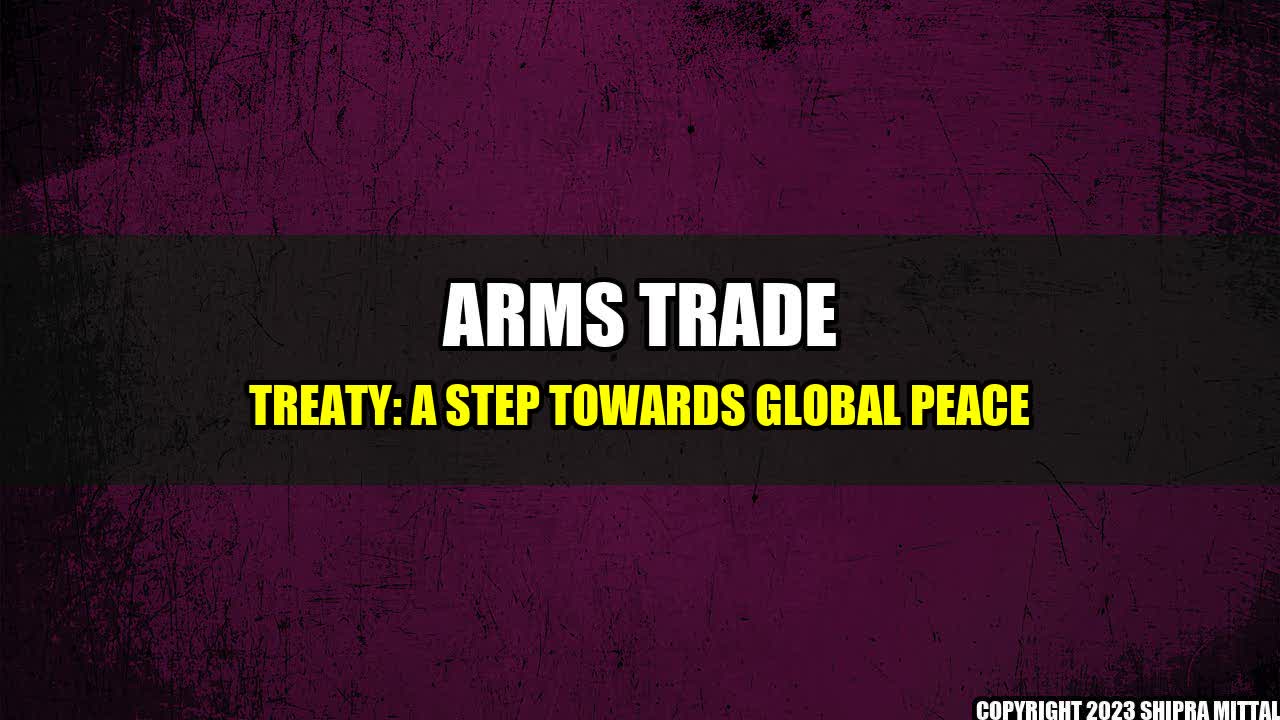Imagine a world where countries stop selling weapons to oppressive regimes, where guns don't end up in the hands of terrorists, and where civilians are not caught in the crossfire of armed conflicts. The Arms Trade Treaty, adopted by the United Nations in 2013, aims to make this vision a reality.
Why is the Arms Trade Treaty important?
The Arms Trade Treaty aims to regulate international trade in conventional weapons and prevent their diversion to illicit or undesirable recipients. This includes small arms and light weapons - like handguns, rifles, and machine guns - as well as tanks, combat aircraft, and warships. By creating a set of international standards for authorizing weapons transfers and monitoring the end use of weapons, the Arms Trade Treaty seeks to prevent human rights abuses and promote global security.
Examples of the Arms Trade Treaty in action
- In 2015, the UN Security Council imposed an arms embargo on the Houthi rebels in Yemen, in response to violence and human rights abuses committed during the country's ongoing civil war. The Arms Trade Treaty provided a legal framework for the embargo and helped prevent the flow of weapons to a group with a history of attacking civilians and using child soldiers.
- In 2018, the European Union adopted new rules for the export of firearms, implementing the provisions of the Arms Trade Treaty. The rules require EU member states to consider the risk of weapons being used in human rights abuses, terrorist acts, or organized crime before approving the sale of firearms to non-EU countries.
Conclusion
- The Arms Trade Treaty is an important step towards promoting global security and preventing human rights abuses.
- The treaty provides a framework for regulating the international trade in weapons and monitoring their end use.
- Examples of the treaty in action include the UN embargo on weapons sales to the Houthi rebels in Yemen and the EU's new rules for exports of firearms.

Akash Mittal Tech Article
Share on Twitter Share on LinkedIn